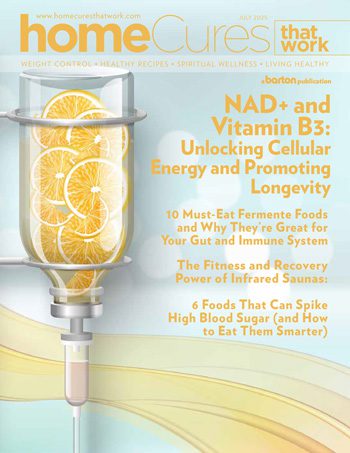Heart Health Metrics: Traditional vs. Scientific Risk Factors
There are two lists of risk factors for heart disease. One is the “traditional list” and the other is the “scientific list.”
The Traditional List
The traditional list [1] comes from a century or more of tradition. It takes into account symptoms and associations, but does not use underlying causes.
1. Age
Age actually causes no problems. If we let problems continue, they get worse over time, not because we’re getting older, but because we didn’t take care of the problem in the beginning. Heart disease is associated with aging only because the problems that cause heart disease take time to develop.
2. Gender
Heart disease is not an issue with gender, it’s hormones. Female hormone cycling with higher levels of estrogen and progesterone improves blood vessel compliance and prevents clotting. As women go through menopause, their risk is the same as men.
3. Family history
Family history may come from two primary sources that could cause heart disease: lifestyle factors, and genetic factors. Thus, if the reason family members have heart disease is due to lifestyle, then it is not a family problem. However, if your family carries an abnormal gene for clotting, this would be important to know. Without specifically knowing why, a family history is not useful.
4. Smoking
Smoking increases the risk of heart attack by about 1.5 times while one is smoking. When people stop smoking their risk drops to normal – unless they have more than thirty-five years smoking a pack a day. [2]
5. High blood pressure (hypertension)
We are led to believe that high blood pressure causes damage to the arteries leading to heart disease. This is not the case. Blood pressure goes up when there is a problem in the blood vessels, or the organs. Some people have kidney disease which causes the blood pressure to go up, others have adrenal gland problems. When the brain is not getting enough of any nutrient, it raises the blood pressure because increasing blood flow is the only way it can get more nutrients, including oxygen, glucose, cholesterol, minerals, and so forth. Blood pressure is a symptom, not a cause.
6. High cholesterol levels (High LDL and low HDL)
We have been told for years that since rabbits can clog their arteries by stuffing them full of cholesterol, that heart disease in humans is the same. It’s not. Cholesterol level is not related to heart disease.[3]
7. High Blood Sugar
High blood sugar contains multiple risk factors. This is one thing that tradition got right. Both type I, or a lack of insulin, and type II, or an excess of insulin lead to heart disease. This will be discussed in the next section.
8. Obesity
As an independent risk factor, obesity is not always associated with heart disease. There is the well-documented “obesity paradox” where people with a high body mass index are less likely to have an acute coronary event.[4] Being obese is not the problem by itself, rather those who are obese and also have high blood sugar and insulin resistance, or inflammation are at increased risk for heart disease.
9. Race
It is amazing how race is inserted everywhere. It’s not race, it’s just a family history issue, as noted above.
10. Physical inactivity
Lack of activity is not a real risk factor. If someone is healthy and inactive, they will not get heart disease. Those who overeat and are inactive may have insulin resistance, and thus increase their risk for heart disease. Activity is a good thing, but may not prevent heart disease in someone who has real risks. There are many cases of people who are very athletic who die of heart disease.[5]
11. Uncontrolled stress, depression, and anger
This is actually a real risk factor that will be discussed in the next section.
12. Poor diet
The diet itself is not a risk factor for heart disease. If those who eat a poor diet do not get insulin resistance or inflammation, they can avoid cardiovascular disease.[6] While the CDC talks about a “poor diet” they do not define it. For example, several studies in rats have shown that fasting prevents heart disease even if they have a poor diet.[7]
13. Alcohol use
There is no clear picture of alcohol increasing heart disease.[8] In fact, some studies find that moderate drinking lowers the risk of cardiovascular events like heart attacks. This may be due to reduced stress, but… little is known for sure. Excessive alcohol consumption, however, may be related to heart disease.
As you can see, the traditional list is based on a lot of “associations” that mostly aren’t the real root causes of vascular disease. Some are definitely related to heart disease, but some have no real causal relationship at all. Now, let’s look at some of the real risk factors.
The Science List
1. Omega 6/3 ratio
There are two aspects of the essential fatty acids that are important. One is omega 6 the other is omega 3[9] . Omega 6 causes inflammation, and omega 3 decreases it.[10] Be very careful that some studies talk about one or the other of these essential polyunsaturated fatty acids, without evaluating the ratio of omega 6 to omega 3. The average American is around 9:1, meaning we have nine times more omega 6 than omega 3. The closer to 1:1, the better. Most can get it between 2:1 and 4:1. If you don’t know what it is, then this is a useful test to get. It is recommended to take fish oil, eat fish, flax and chia seeds, but you should also avoid seed oils, soy oil, corn oil, and vegetable oil in your food. Coconut oil, olive oil, and avocado oil are relatively low in omega 6.
2. Lipoprotein A
This is known as “L,P, little-a,” or LP(a). It is a protein that has fat in it that can prevent clots from dissolving.[11] Thus, when there is damage to an artery, and a clot forms, the clot can “organize” and stay there forever if the person has high LP(a). Then, having a bump in the artery makes it more susceptible to damage and more clots forming. Thus, LP(a) allows the clots in the arteries to get bigger and bigger, which may cause complete plugging of arteries. If you have high LP(a) then it would be best to avoid inflammation that may cause clotting in the first place, get enough omega 3 oil, and also take Nattokinase daily to dissolve clots.
3. Inflammation
I hate to use this word because it is so broad in biological terms. It could mean infection with a virus, a bacterium, a fungus (yeast), or a parasite. It could be caused by toxins, or lack of nutrients. It could be related to high omega 6/3 ratio, autoimmune disease, or allergies. Anything that stimulates the immune system to react, causing pain, swelling, redness, and heat creates inflammation. Even gum disease in the mouth is related to heart disease by causing inflammation. This is because any inflammation in the body increases the clotting factors and causes more clots to form in the arteries [12]. Once you know you have inflammation, the next step is to find the source so you can remove it. It is alright to take anti-inflammatories such as turmeric (curcumin), Boswellia and berberine, but the best way is to find the cause. This could be infections, or omega 6 oils, but chronic inflammation usually comes from eating sugar.[13]
4. Damaged Glycocalyx
The lining of the blood vessels has many benefits, most of all to prevent clots from forming inside arteries[14]. This layer is made by the cells that line the inside of the arteries, called the endothelium. When the glycocalyx is damaged, and the endothelium is exposed, the blood can form clots there. Anything that damages this lining can lead to vascular disease, such as: smoking, alcohol, other toxins, high blood sugar, other metabolic diseases, deficiencies, and even mechanical injury. The endothelial cells can repair the damage in microseconds if the proper nutrients from fruits and vegetables, but also seaweed and mushrooms are available.[15] This may be the value of a vegan diet for heart disease.[16] Periodic fasting also repairs the glycocalyx.
5. Insulin resistance
Insulin resistance causes heart disease. Why is this important? Because you can be insulin resistant and not know it long before you are diagnosed with high blood sugar. Insulin tells your cells not to use fat for energy – which is about 60% of the energy of the heart! What’s more, the excess insulin causes a decrease in glucose transport proteins so the cells that line your blood vessels, the endothelium, do not work well to produce the glycocalyx that lines the arteries, allowing clots to form more easily. The worst part is that it also increases inflammation causing more clotting in the arteries.[17] This is where diet meets heart disease. All the foods that cause insulin resistance also deplete Nitric Oxide[18] (NO) causing hypertension and increasing inflammation.[19] Sugar, salt, fat, and MSG lead to insulin resistance. The best way to reduce and avoid insulin resistance is by fasting. I recommend avoiding food after 6pm daily and fasting for 3 days once per month.
6. NSAIDs
This is a paradox because these drugs are taken to decrease inflammation, but they cause inflammation in the blood vessels! The reason for this is because both the inflammatory hormones and the anti-inflammatory hormones are made by the same enzymes[20]. So, these medications block omega 6 from causing inflammation, but also block the omega 3 oils from making the mediators needed to prevent clots and relax blood vessels. The body cannot stop clots from forming so people get heart attacks.[21] If you take them occasionally it isn’t an issue. It is regular or daily use that is risky. The worst offenders are those that inhibit the COX2 enzyme: Celebrex, Vioxx, and Bextra.[22]
7. Unhealthy diet
We focus a lot on diet in our society. There are so many diets, each with their proponents. There are actually some things that people do with their diet that contribute to heart disease. Eating at night prevents repair of blood vessels. Eating fructose causes inflammation and insulin resistance. Artificial sweeteners and sugars cause insulin resistance. Eating omega 6 oils and trans fats increases inflammation. The best diet is to eat things that don’t have a list of ingredients. Make your own food – avoid restaurants, fried food, take-out, prepared foods, snack foods, and processed foods. [23]
8. Stress, depression, anger
Emotional issues are significantly related to heart disease.[24] Stress raises your adrenal hormones which prevents repair of the blood vessels. The adrenal hormone, cortisol, is a “catabolic” hormone which causes breakdown of the body, including the immune system and vascular system. Moreover, it prevents the “anabolic” metabolism from repairing damage every night, allowing clots to grow in the arteries, which causes atherosclerosis. Getting out of stress is difficult. Start by keeping a good circadian rhythm. Don’t eat after 6pm, sleep by 10pm, wake up at 6am, and eat breakfast by 8am. It is also very important to let go of anger and forgive those who have hurt you or others. Exercise can help to increase endorphins, the hormones that lower stress. Fasting also decreases stress hormones and allows repair of the arteries. Periodic fasting of three days monthly is a great way to put your body in “anabolic” metabolism.
Once you know the risk factors, you can know your real risk for heart disease. If you are looking at things that are not real risks, then you never know what to do to prevent heart attacks and strokes. All the real risks revolve around the clotting mechanism. Preventing clots, and repairing damaged arteries by dissolving clots is the way to maintain squeaky-clean arteries. There are steps you can take to help yourself RIGHT NOW. Learn how with the Healthy Heart Solution Kit.



















